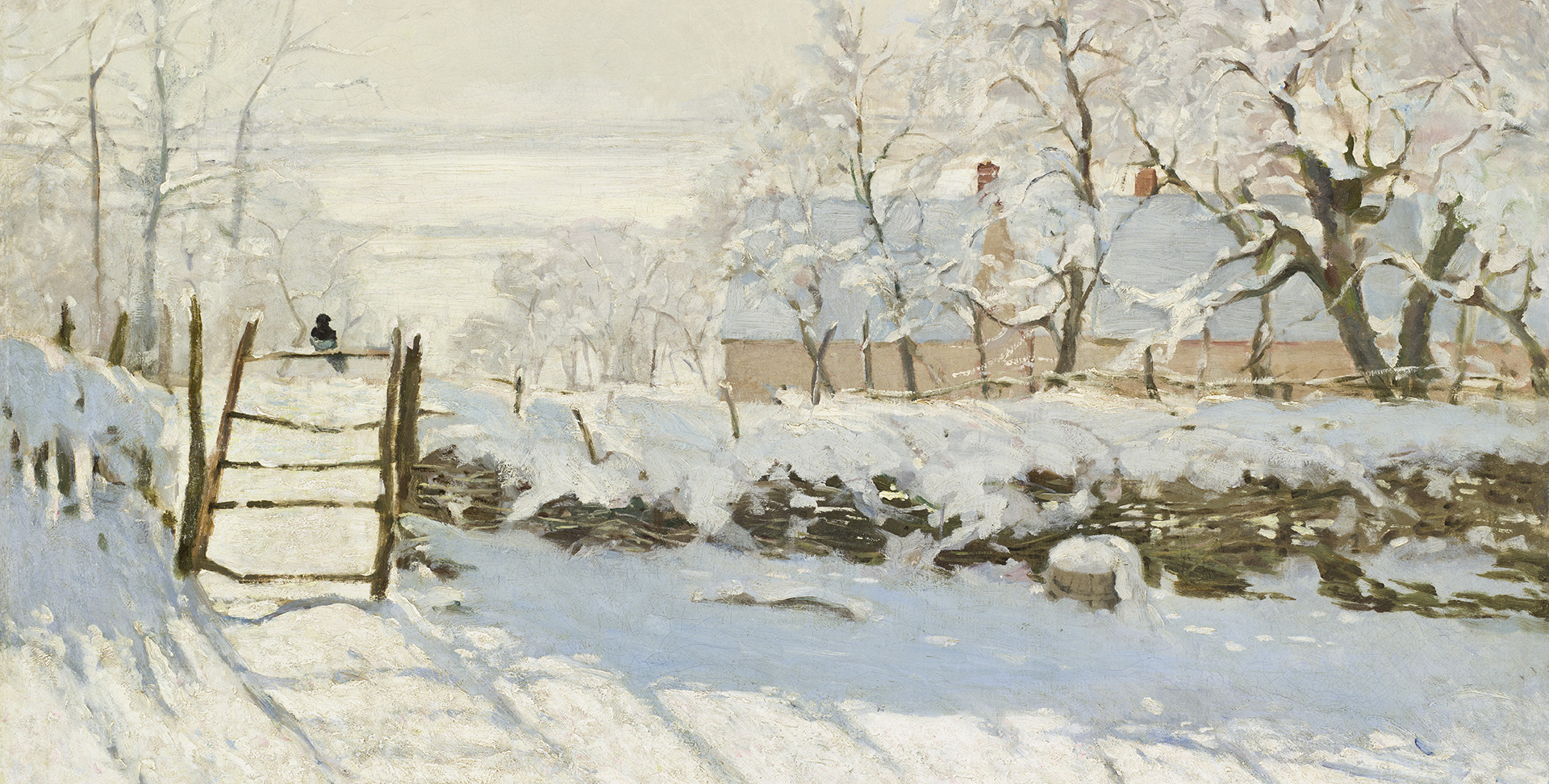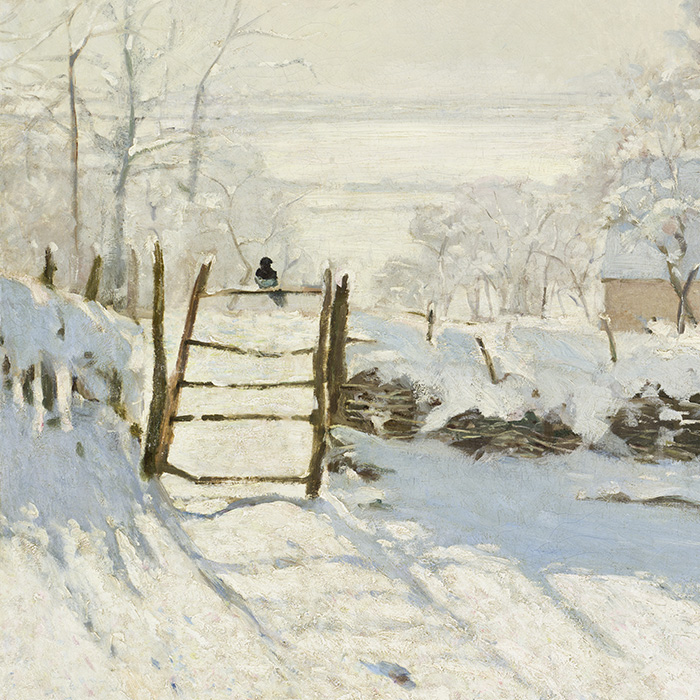


The 19th century sees major revolutions in landscape painting! Previously, it was regarded as a minor genre with idealised settings. Now it’s become a playground for modern painters.
And the impressionists are no exception to the rule! By painting outdoors, they seek to capture fleeting variations of light… Suffice to say that they observe nature and the passing seasons attentively. The proof in images?
In this episode, we’re going to take a closer look at impressionist seasons and landscapes. Let’s go!

The impressionists renewed landscape painting by assigning a major role to the passing seasons.
Among the seasons the impressionists hold dear, one stands out in particular: winter! It has to be said that it faces the artists with a good many challenges… How do you depict light on white snow? Or make people feel cold by simply looking at a canvas?
It’s above all Claude Monet who strives to depict winter, to the point of painting outside in the snow, bundled up in three overcoats and equipped with a heater!

The impressionists, like Monet, are particularly interested in depicting winter.
The impressionists paint winter with an eye for realism… so much so that you could use their canvases as archives of past weather conditions.
Look at this painting by Guillaumin, produced during the glacial winter of 1879-1880. The newspapers of the day speak of the Seine in the grip of the ice and snow that cover its quays. All of which can be found in the impressionists’ paintings!
Take care, though, as these works also reflect the artists’ sensibilities. They don’t always include all aspects of winter, such as the rain, the cold fog, or such dramatic consequences as the sufferings of the poorest citizens. Impressionist winters can sometimes seem idealised, omitting the season’s harshest realities.

Although the impressionists depict winter landscapes accurately, they leave out certain aspects, the most dramatic in particular.
Let’s get away from the cold and take ourselves off to the south of France! In the late 19th century, the name “Côte d’Azur” makes its first appearance to designate the region, which is enjoying increasing popularity. Previously, the Provençal climate was deemed too hot, unpleasant, even bad for the digestion!
But things are changing as the century comes to an end: the region (like Italy’s shores) is becoming a holiday destination for the wealthiest.
The impressionists also make their way there and play a key role in this transformation. By painting the beauty of the Mediterranean’s landscapes and blue skies, they help make this climate more appealing.
By the way, scientists officially define the term “Mediterranean climate” in 1929, reflecting the growing interest in the region!

The impressionist artists participate in the Côte d’Azur’s rise in popularity and positive perception of its “Mediterranean climate”.
With global warming, works from this era provide invaluable insight into the landscapes of bygone days and the way that climatic conditions have evolved. You can study the shifts between the landscapes depicted on these canvases, present-day landscapes and… those still to come. Here are two examples.

Impressionist paintings may well become witnesses of landscapes that have disappeared due to climate change.
An episode produced under the academic supervision of Alexis Metzger and adapted from his lecture“The Impressionist Adventure · The seasons”.

"*" indicates required fields